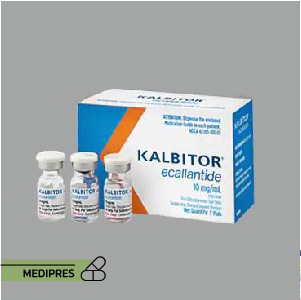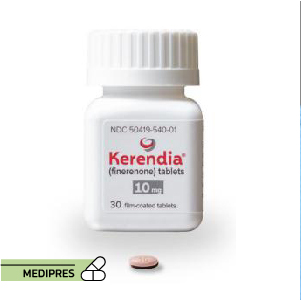
Ketoconazole
23 June, 2023
Kevzara
23 June, 2023Ketorolac
Generic name: Ketorolac tromethamine
Drug class: Nonsteroidal anti-inflammatory drugs
Dosage form: Tablet, Injection
Root of administration: Oral, Intramuscular (IM) Injection, Intravenous (IV) Injection.
Dose: Tablet: 10 mg, Injection:15, 30, 60 mg
Mechanism of action: Ketorolac works by blocking the production of certain natural substances in your body that cause inflammation. This blockage reduces swelling, pain, or fever. Ketorolac reduces the production of chemicals by the immune system that cause redness, fever, pain, and inflammation. Pain relief helps you recover more easily so you can return to your normal daily activities. It is a medium-acting NSAID that inhibits PG, acting more as an analgesic than an anti-inflammatory.
Drug usage cases: Postoperative Pain: Ketorolac is commonly used to manage pain following surgical procedures. It can be administered intravenously (IV) or intramuscularly (IM) in the immediate postoperative period to provide analgesia. Acute Pain: Ketorolac is used to relieve acute pain, such as pain due to injuries, dental procedures, renal colic, or musculoskeletal conditions. It can be administered orally or parenterally (IV or IM), depending on the severity of the pain and the patient’s ability to take oral medications. Migraine: Ketorolac can be used as an alternative to other medications for the treatment of acute migraine attacks, particularly when other options are contraindicated or not well-tolerated. It is typically administered parenterally.
Drug contra indications: Allergy or Hypersensitivity: Ketorolac should not be used in individuals who have a known allergy or hypersensitivity to ketorolac or other NSAIDs, such as aspirin or ibuprofen. Severe allergic reactions, including anaphylaxis, can occur in these cases. Active or History of Peptic Ulcer Disease or Gastrointestinal Bleeding: Ketorolac can increase the risk of gastrointestinal ulcers, bleeding, and perforation. It is contraindicated in individuals with active or recent gastrointestinal bleeding, peptic ulcer disease, or a history of gastrointestinal perforation. Severe Kidney Impairment: Ketorolac is primarily eliminated through the kidneys. It should be used with caution or avoided in individuals with severe kidney impairment or end-stage renal disease, as it can further impair kidney function and increase the risk of kidney damage. History of Stroke or Bleeding Disorders: Ketorolac can increase the risk of bleeding, including bleeding in the brain. It is contraindicated in individuals with a history of stroke, bleeding disorders, or those at high risk of bleeding. Severe Heart Failure: Ketorolac can cause fluid retention and worsen heart failure symptoms. It is contraindicated in individuals with severe heart failure or those at high risk of fluid retention.
side effects: Gastrointestinal Effects: The most common side effects of ketorolac involve the gastrointestinal system and may include nausea, stomach pain, indigestion, heartburn, diarrhea, and constipation. Ketorolac can also increase the risk of gastrointestinal ulcers, bleeding, and perforation, particularly with long-term use or in individuals with a history of such conditions. Kidney Effects: Ketorolac can affect kidney function, especially in individuals with pre-existing kidney disease or those at risk of kidney impairment. Side effects can include fluid retention, swelling, increased blood pressure, and changes in urine frequency or color. Bleeding: Ketorolac can increase the risk of bleeding, including gastrointestinal bleeding, bleeding from surgical sites, or bleeding in the brain. It is important to avoid using ketorolac in individuals with bleeding disorders or those taking anticoagulant medications. Allergic Reactions: In some cases, ketorolac can cause allergic reactions. Symptoms may include hives, rash, itching, facial swelling, wheezing, or difficulty breathing. Severe allergic reactions, including anaphylaxis, are rare but can occur. Central Nervous System Effects: Ketorolac may cause drowsiness, dizziness, headache, confusion, and in rare cases, more severe central nervous system effects such as hallucinations, depression, or seizures. Cardiovascular Effects: Ketorolac may increase the risk of cardiovascular events such as heart attack or stroke, particularly with long-term use or in individuals with pre-existing heart disease or risk factors for cardiovascular disease.
Warnings: Increased Risk of Cardiovascular Events: NSAIDs, including ketorolac, may increase the risk of serious cardiovascular events such as heart attack or stroke, which can be fatal. This risk may be higher in individuals with pre-existing cardiovascular disease or risk factors for cardiovascular disease, and the risk may increase with prolonged use. Gastrointestinal Risk: Ketorolac can increase the risk of gastrointestinal ulcers, bleeding, and perforation, which can be life-threatening and may occur without warning. This risk is higher in individuals with a history of gastrointestinal disease, such as ulcers or bleeding, and in elderly individuals. Kidney Effects: Ketorolac can cause or worsen kidney impairment, including acute kidney injury, especially in individuals with pre-existing kidney disease, heart failure, or dehydration. It is important to use the lowest effective dose for the shortest duration possible to minimize the risk of kidney damage. Allergic Reactions: Ketorolac can cause severe allergic reactions, including anaphylaxis, which can be life-threatening. Individuals with a history of allergic reactions to NSAIDs or aspirin are at higher risk. It is important to discontinue ketorolac immediately and seek medical attention if an allergic reaction occurs. Asthma and Respiratory Effects: Ketorolac can trigger or worsen asthma and other respiratory conditions, causing difficulty breathing or wheezing. Individuals with a history of asthma or other respiratory disorders should use ketorolac with caution. Bleeding Risk: Ketorolac can increase the risk of bleeding, including gastrointestinal bleeding, bleeding from surgical sites, or bleeding in the brain. It should be avoided in individuals with bleeding disorders or those taking anticoagulant medications. Use in Specific Populations: Ketorolac is not recommended for use in children, as safety and efficacy have not been established. It should be used with caution in the elderly, as they may be more susceptible to its side effects.
Use during pregnancy or breastfeeding: Ketorolac is contraindicated during the third trimester of pregnancy due to the potential risks to the fetus, including premature closure of the ductus arteriosus. Ketorolac is excreted in breast milk and should be avoided during breastfeeding.



